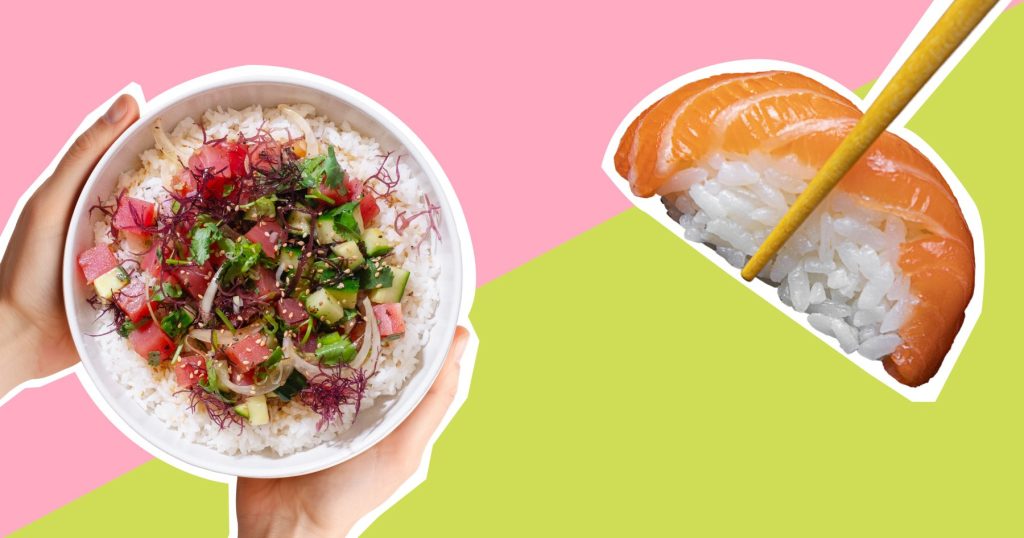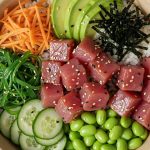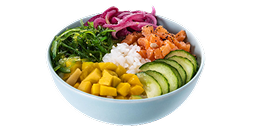When it comes to raw fish dishes, people’s beliefs are often divided into two camps. There’s one group that sees any raw fish dish as a form of sushi. Then, there’s the other group that confidently points to Poke as the true star. But then, a third group exists, one that believes the two are simply the same.
While the confusion is understandable, the reality is that poke and sushi are two entirely different dishes with distinct origins, preparation styles, and flavor profiles. They are not interchangeable, and each offers a unique culinary experience that deserves to be appreciated on its own merits.
This blog will settle the debate once and for all by diving into the fundamental distinctions between Hawaiian poke and Japanese sushi, showing you why they are two separate culinary arts and how you can choose the perfect dish for your next meal.
What is Hawaiian Poke?
At its heart, Hawaiian poke is a simple, casual dish with deep roots in Pacific Island culture. The word “poke” (pronounced poh-kay) is Hawaiian for “to slice” or “to cut,” which perfectly describes its key component: bite-sized cubes of raw fish. This dish originated centuries ago with native fishermen who would season their fresh catch with sea salt, limu (seaweed), and crushed nuts. Over time, with the arrival of Japanese immigrants, it evolved to include now-classic ingredients like soy sauce and sesame oil.
Today, poke is known for its bold, complex flavors. The fish is pre-marinated, and the bowl is built with a wide array of ingredients and sauces, resulting in a deconstructed dish that is as vibrant in flavor as it is in color.
What is Japanese Sushi?
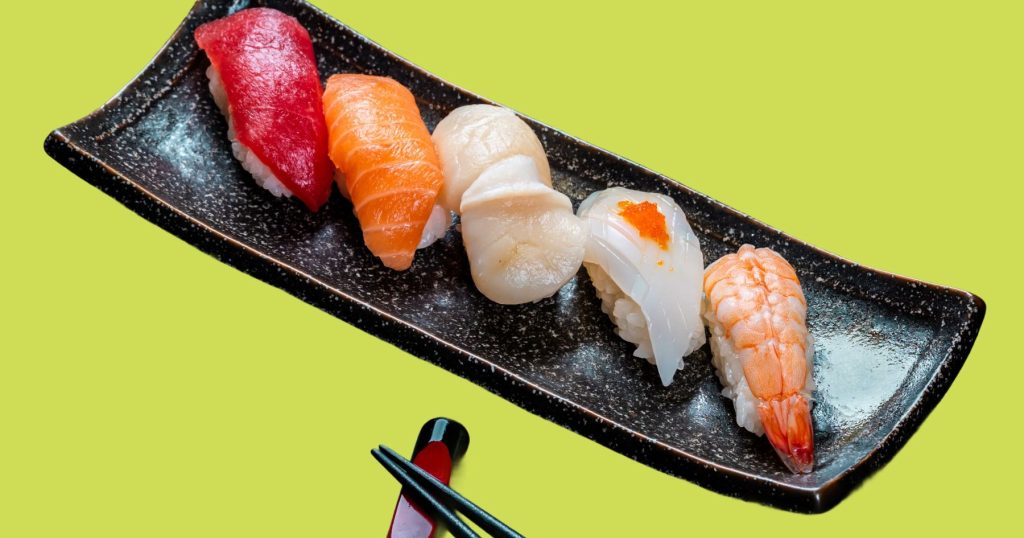
Unlike poke, sushi is a meticulously prepared Japanese culinary art with a history stretching back over a thousand years. Its origins are in a method of preserving fish in fermented rice. The word “sushi” itself refers to the “sour rice” that is its defining ingredient. Without this vinegared rice, a dish cannot technically be called sushi. Sushi is a constructed, bite-sized food, whether it’s a maki roll (ingredients rolled in seaweed and rice), a nigiri (fish pressed over a small mound of rice), or a sashimi (just the sliced fish without rice). The philosophy behind sushi is a focus on purity and subtlety, highlighting the natural, delicate flavor of the fresh fish with minimal added seasoning.
What Poke and Sushi Have in Common
While poke and sushi have many differences, they do share some important similarities that often lead to confusion.
- Raw Fish: The most obvious shared trait is the use of fresh, raw fish as a primary ingredient. Both cuisines value high-quality, often sushi-grade, fish.
- Rice Base: Both are commonly served over a rice base, although the type of rice and its preparation differ (vinegared vs. plain steamed).
- Fresh Ingredients: They are both celebrated for their light, fresh, and healthy ingredients, incorporating a variety of fresh vegetables and often, soy-based sauces.
- A La Carte & Customizable: In modern practice, both poke and sushi offer a degree of customization, allowing diners to choose their ingredients, although poke is typically more flexible with its toppings and sauces.
What Are the Differences Between Poke and Sushi?
While both dishes proudly feature raw fish and often rice, their core identities are worlds apart. The most fundamental difference lies in their defining ingredients, which lead to distinct preparation methods and flavor philosophies.
Defining Ingredient: The Star of the Show
Sushi is defined by its vinegared rice (shari), which is the non-negotiable star of the show. Without this specially prepared rice, a dish cannot be called sushi. In contrast, poke is defined by its cubed, marinated raw fish, with “poke” meaning “to slice” in Hawaiian. The rice base in a poke bowl is typically neutral, serving as a canvas for the main event, the seasoned fish.
Preparation & Form: Deconstructed vs. Constructed
This difference in defining ingredients leads to entirely different preparation methods. Poke is a deconstructed, casual dish served in a bowl. All the vibrant ingredients: fish, sauces, and an array of toppings that are mixed together to create a harmonious, layered meal. It’s about combining flavors and textures in every single scoop. Sushi, on the other hand, is a meticulously constructed, bite-sized food served on a platter as individual, artfully prepared pieces. Each piece is a testament to precision, designed to deliver a specific, harmonious bite.
Flavor & Customization: Purity vs. Complexity
The flavor profiles of the two dishes also set them apart. Traditional sushi typically focuses on purity and subtlety, aiming to highlight the delicate, natural flavor of the fresh fish with minimal added seasoning, like a dab of wasabi or a light dip in soy sauce. Poke, however, embraces bold, complex, and highly customizable flavors. The fish is pre-marinated in various sauces, and bowls are often built with a wide array of toppings, allowing for a dynamic interplay of sweet, spicy, tangy, and savory notes tailored to individual preferences.
Serving Style: A Bowl vs. a Platter
Finally, their serving styles reflect their purpose. Poke is served as a complete, casual meal in a single bowl, making it an ideal option for a quick, nutritious, and satisfying lunch or dinner. Sushi is typically served on a platter as a series of individual, delicate pieces, encouraging a slower, more deliberate dining experience where each piece is savored.
New to Poke? Where to Try It for the First Time in Montreal
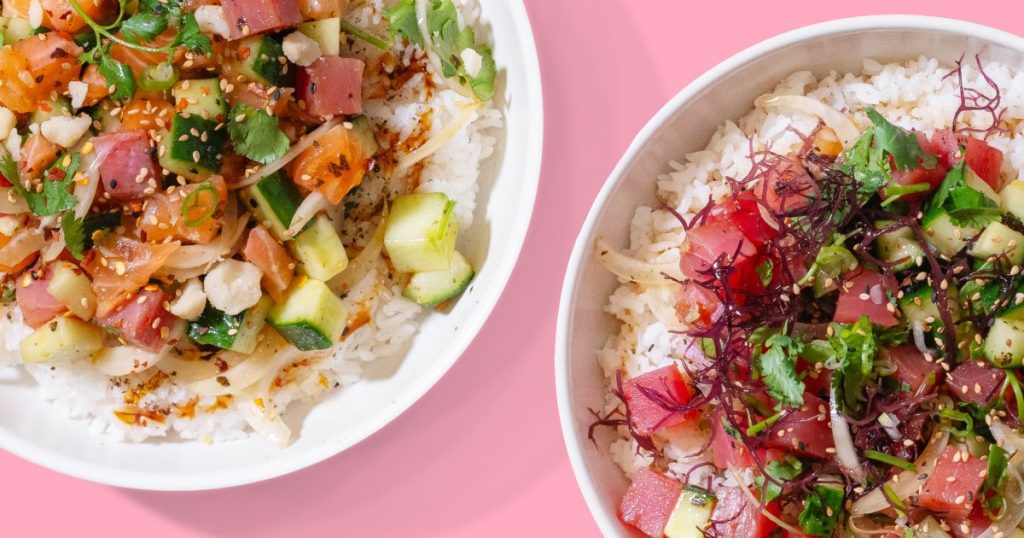
If you’re new to the world of poké, it can be hard to know where to start. You want a place that serves authentic, high-quality ingredients with a welcoming atmosphere. Look no further than Olu Olu Poké, the perfect destination to begin your poké journey in Montreal.
Olu Olu Poké has become a local favorite for its commitment to fresh, vibrant flavors and exceptional customer service. With three convenient locations across the city, you’re never far from your first delicious bowl. Whether you’re near the NDG, Queen Mary, or St-Catherine branches, you’ll find a welcoming space to discover your new favorite meal.
Conclusion
While it’s easy to see why poke and sushi are often confused, understanding their differences allows us to appreciate each dish for its own unique story and flavor. Poke is not just deconstructed sushi; it is a vibrant, distinct culinary art form with Hawaiian roots, a bold flavor profile, and a focus on customization. It’s a testament to how simple, fresh ingredients can come together in a dynamic and satisfying way.
If you’re ready to experience the delicious world of authentic Hawaiian poké for yourself, there’s no better place to start than at Olu Olu Poké. We invite you to try a bowl and taste the vibrant flavors that have made poké a true global sensation. Visit one of our three Montreal locations today and find your perfect meal.
FAQs
1. What is the main difference between poke and sushi?
The main difference is the defining ingredient: poke is defined by its cubed, marinated fish, while sushi is defined by its vinegared rice.
2. Are they from the same place?
No. Poke is a traditional Hawaiian dish, while sushi is an ancient Japanese culinary art.
3. Do poke and sushi have a similar preparation style?
No. Poke is a deconstructed, casual bowl where ingredients are mixed. Sushi is a constructed, elegant dish with individual, assembled pieces.
4. Is one healthier than the other?
Both are generally healthy and fresh dishes that use similar ingredients, like raw fish and vegetables.
5. Why do they taste different?
Poke has a bold, complex, and customizable flavor from its sauces. Sushi focuses on the purity and simplicity of the fish’s natural taste.
